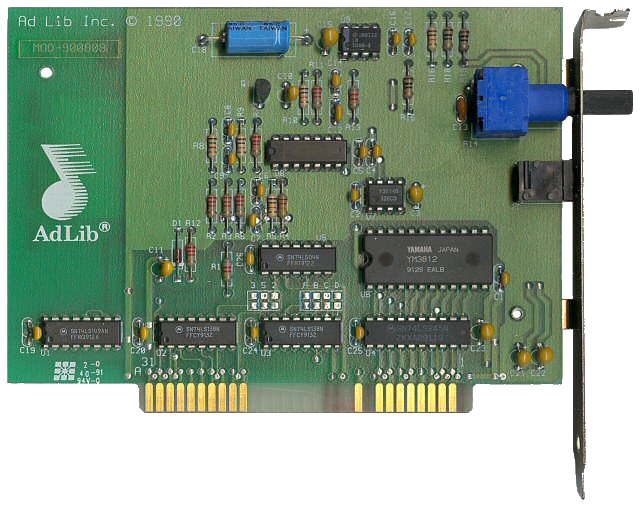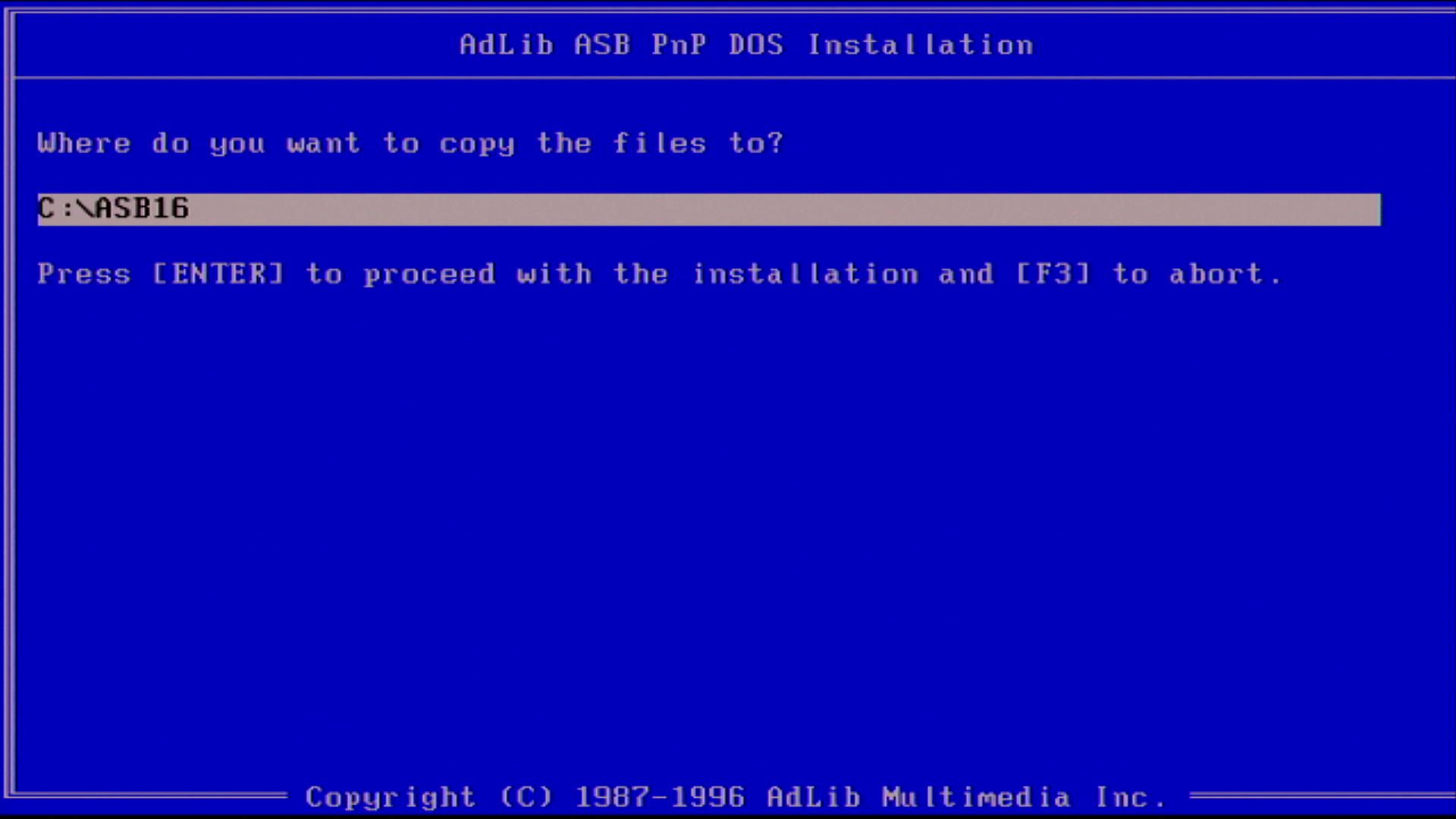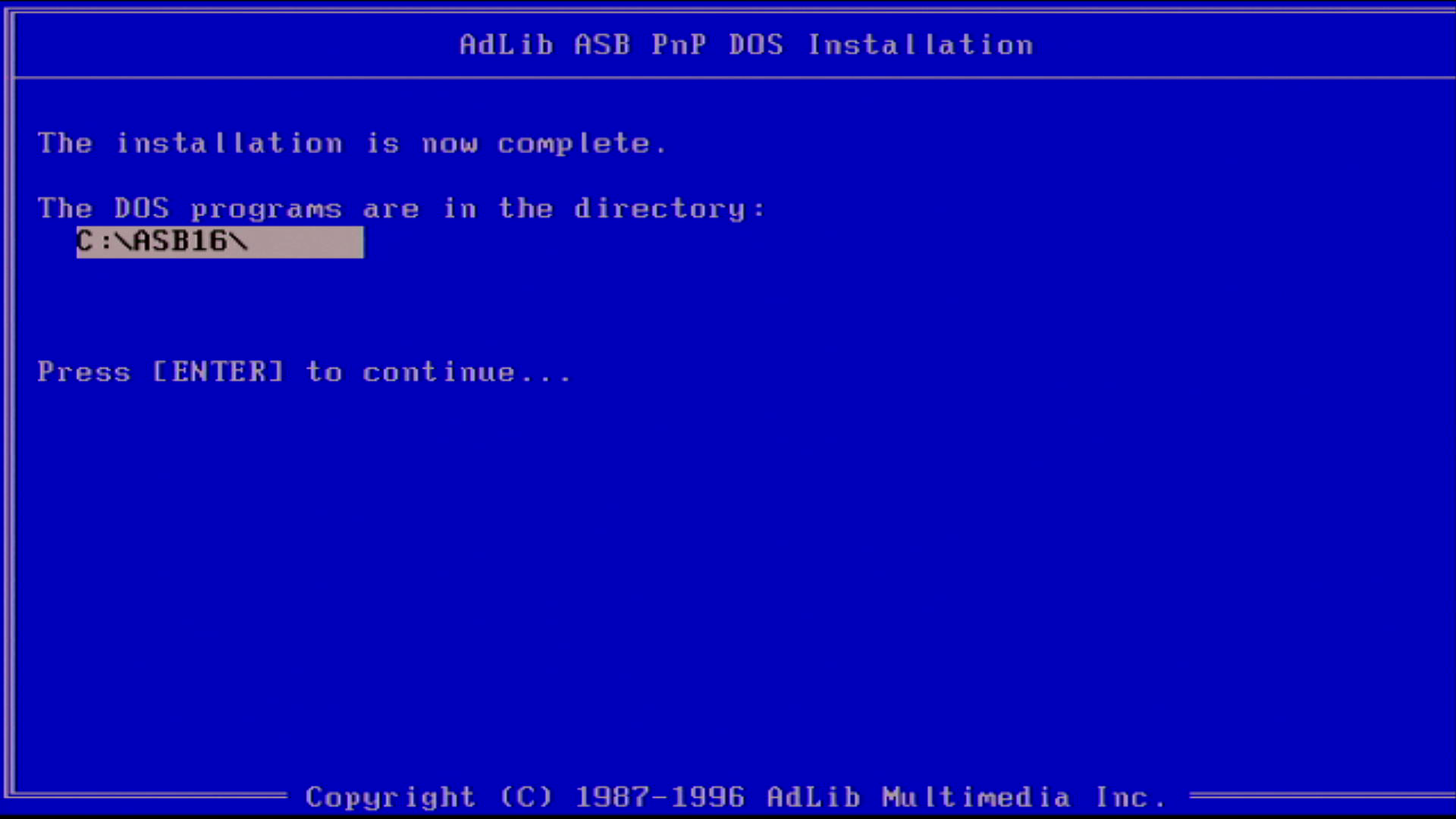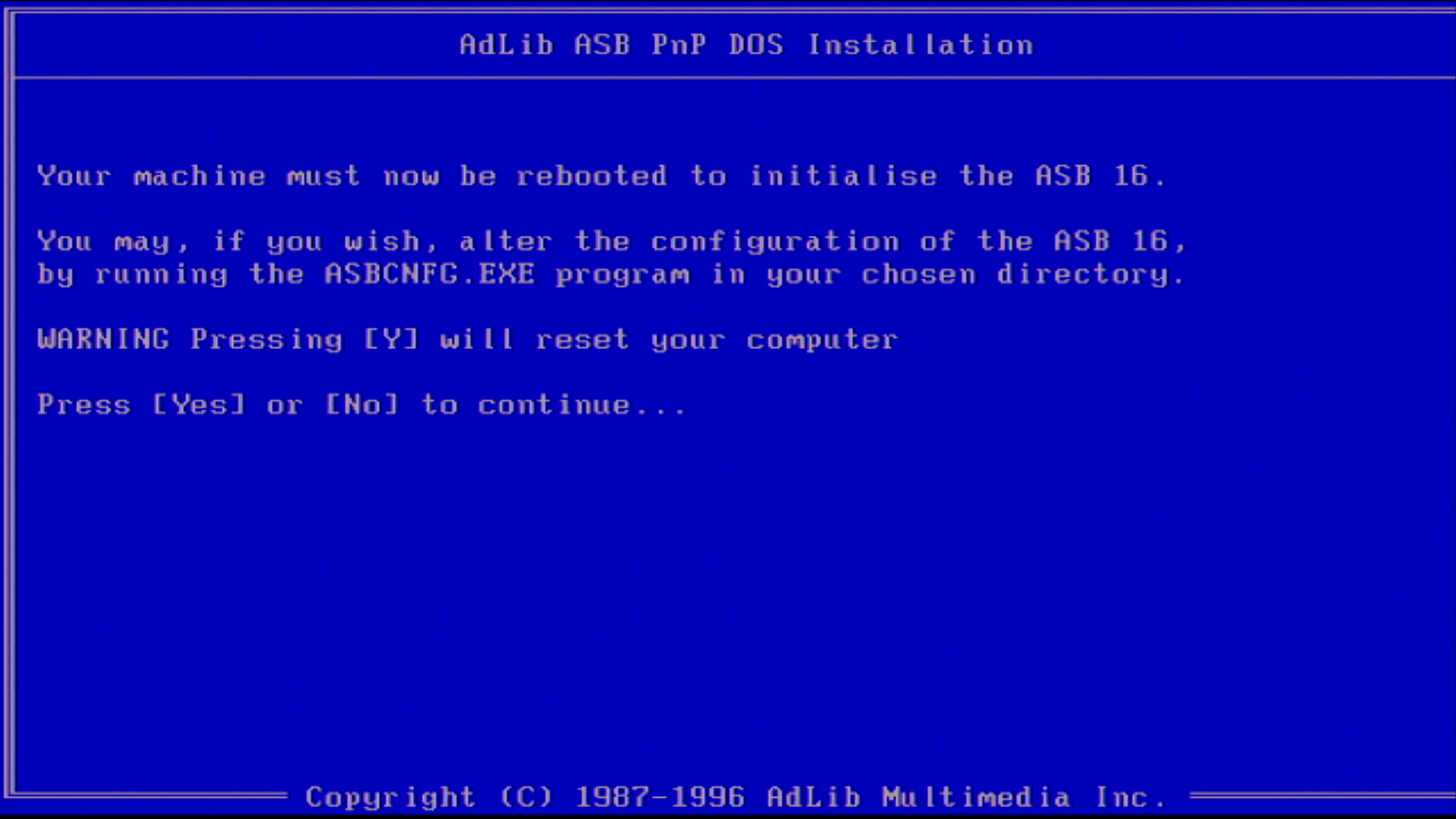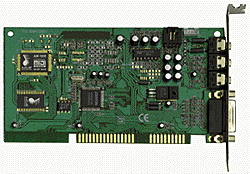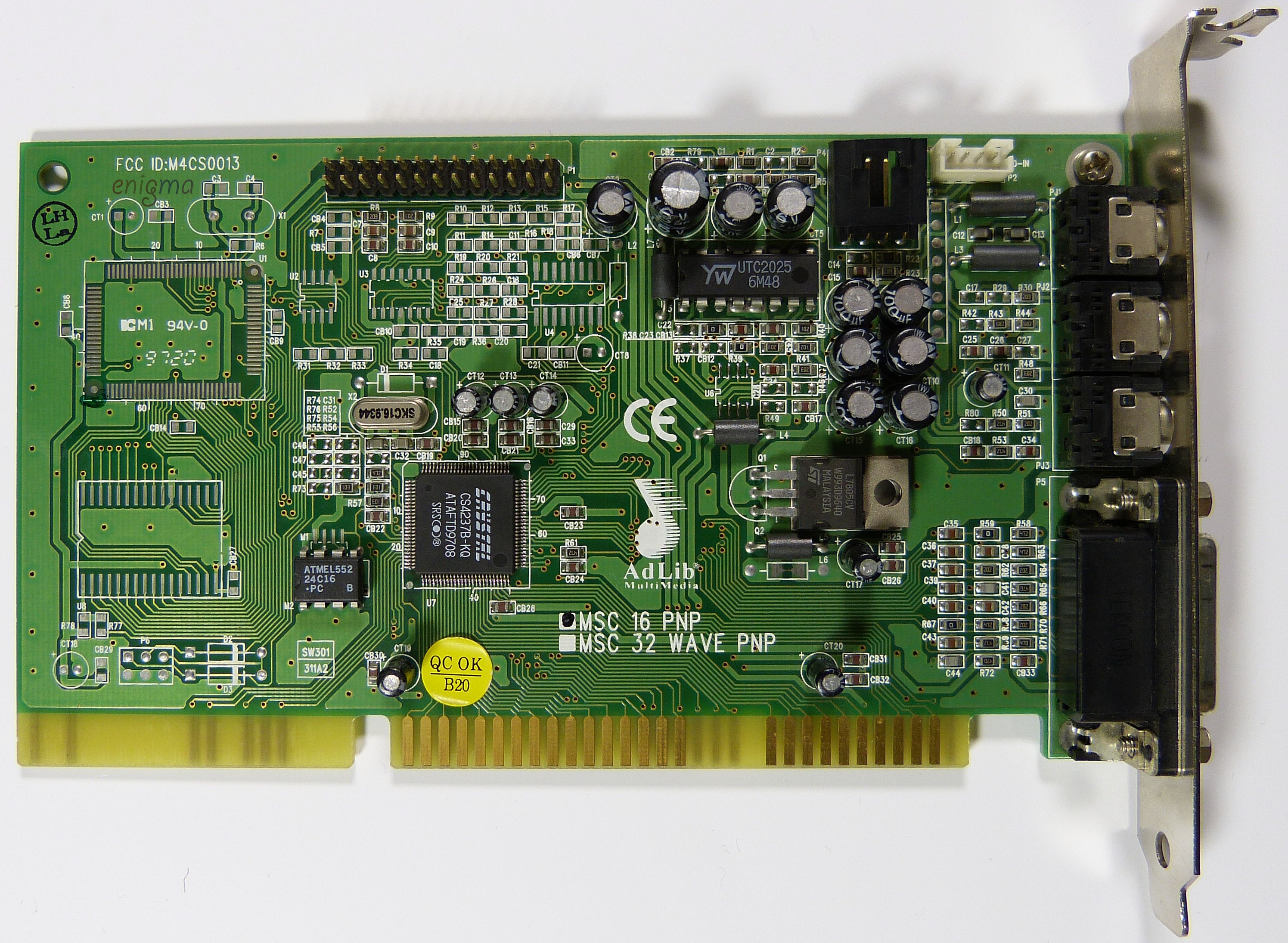 Ad Lib
Ad Lib
The original Ad Lib card, or to give it its full name, Ad Lib Music Synthesizer Card, was released in August 1987 after making its debut at the Chicago Consumer Electronics Show in June 1987.
The card provided 8-bit mono FM synthesis via a Yamaha YM-3812 chip (aka "OPL2"). No 'digital' voice support, just music. Ad Lib ruled at the top of the early PC sound card market for 3 years with almost no competition. It's price tag was $219.99.
Because it was such a step-up from the PC speaker, it became a hot seller - so much so, that for the next 10-15 years, many competing sound card manufacturers embedded full backward-compatibility with the Ad Lib standard, which meant the majority of games software companies also wrote in support for Ad Lib FM music synthesis into their games.
Technically, the Yamaha OPL2 chip could produce either 9 sound channels or 6 sound channels plus 5 hit instruments at the same time using Frequency Modulation (FM). It only had two frequency operators though, so getting it to produce realistic musical instrument sounds was quite impossible.
Sadly, due to Ad Lib's dependence on Yamaha who suffered long delays introducing their latest multimedia chipset, their new product, Ad Lib Gold PC-1000, was never to see the light of day under Ad Lib's management. Unable to remain solvent, Ad Lib closed their doors on 1st May 1992, having been bought by German company Binnenalster GmbH who promptly cut a large number of the staff who came from Ad Lib. Binnenalster rebranded the remaining organisation Ad Lib Multimedia, Inc. The new company did go on to ship the Gold PC-1000 plus a few later cards (MSC 16 PnP, MSC 32 PnP, and ASB 16/32/64), and even developed the "Gold Sound Standard".
|
The original Ad Lib boards from 1987 came with a quarter-inch jack on the faceplate, as it was designed for music composition. The later board design arrived in 1990, where this was replaced with the more standard 3.5mm jack.
 Rainbow Arts AdLib
Rainbow Arts AdLib 
The German software house, Rainbow Arts, produced their own card that was functionally the same as an Ad Lib (and fully compatible).
Founded in 1984, Rainbow Arts produced many game titles for DOS and other platforms. Such games as Earthworm Jim, Turrican and X-Out, to name just a few, were the work of the company.
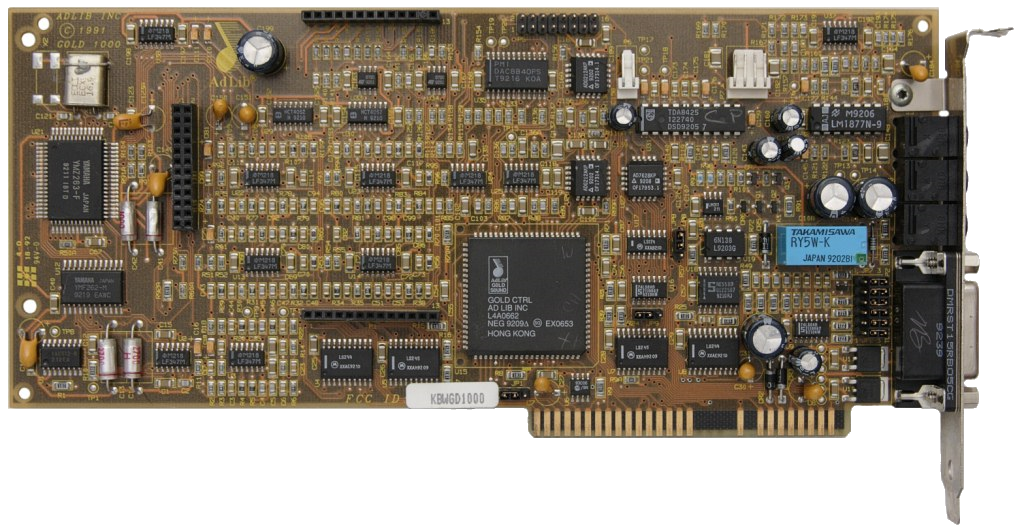 Adlib Gold
Adlib Gold 

Introduced: 1991
Chip: Yamaha YMF-262
FCC ID: KBWGD1000 or GKKGD1000
Ad Lib returned to a crowded market in 1991, one that dominated by Creative Labs. Their new offering, the Ad Lib Gold was actually more functional than Creative's Sound Blaster Pro which was launched at the same time, and instead used a pair of Yamaha YM-3812 chips to provide stereo audio. Sadly, Ad Lib struggled to get games developers to support the Gold.
The Gold was developed by an outside company called Lyrtech, since Ad Lib didn't do development in-house. Two variants were planned for, Gold 1000 and Gold 2000, with the latter never reaching the market before Ad Lib went bankrupt. Rumour has it that Creative Labs pressured Yamaha into delaying their testing of Ad Lib's MMA chip (YMZ-263) which caused the Gold's very late arrival.
It is believed the Gold would also have a SCSI connector, but by the time the Gold 1000 was being readied for sale this became a cost option.
This 8-bit board combines digital audio record and playback, joystick control, MIDI, and music synthesis with a high level of quality. The Gold 1000's audio capabilities include two independent channels, which let the card play stereo or speech on one track and monophonic music on the other. Like the ProAudio Spectrum 16 and the Sound Blaster Pro 2.0 (version 2), it uses the Yamaha YMF262 synthesizer chip. This improved chip permits the Gold card to direct a single voice to the left, right, or center, whereas the YMF3812 (found in the original SoundBlaster Pro and the ProAudio Spectrum 8) must call two voices to direct a sound to the center. The Gold card reduces crackling, hissing, and popping sounds at lower frequencies by using three separate filters for anti-aliasing, double over-sampling, and double undersampling.
Unfortunately, the collection of five memory-resident device drivers that come with the AdLib Gold require a mind-boggling 200K of memory. I fiddled for hours trying to load them into high memory under DOS 5.0, but had no luck."
PC Games, February/March 1993

Ad Lib Gold Advertisement (June 1992)
An add-on board was also available for the Gold which provided it with virtual surround sound.
More Images
Ad Lib MSC 16/3D and 32 Wave/3D 





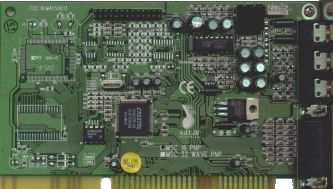
Introduced: 1996
FM Synth: Crystal CS4236-KQ (1996) / Crystal CS4237B-KQ (1997)
Plug & Play: Yes
Wavetable Header: Yes (MSC 16 cards only)
Wave Chip: AdLib AW-1000 (MSC 32 Wave cards only)
Sample ROM: 1 MB
SnR: -85 dB
FCC ID: M4CS0013
Known Board Revisions:
The MSC 16 was the budget card produced by the newly renamed "Ad Lib Multimedia, Inc." after the original company was sold off to German company Binnenalster GmbH.
With dual DMA channels the MSC 16 and MSC 32 range can simultaneously record and playback up to 48 kHz in stereo. The MIDI/game port is fully MPU-401 UART compliant.
Its bigger brother, the MSC 32 Wave was the same card but came with an onboard wavetable synthesizer. This too got the SRS surround sound feature added in 1997, and so was sold as the MSC 32 Wave 3D.
Both these cards were designed for the OEM market. Until 1996 they were designed in Quebec and built in Montreal. Later they were manufactured in Taiwan. Both cards got a small upgrade in 1997, when the Crystal CS4236 was replaced with a CS4237B - this added SRS surround sound. Cards with the 4237B were sold with the 3D suffix.
The driver setup utility looks like this:
And the utilities (including the 'fake' Windows one) look like this:

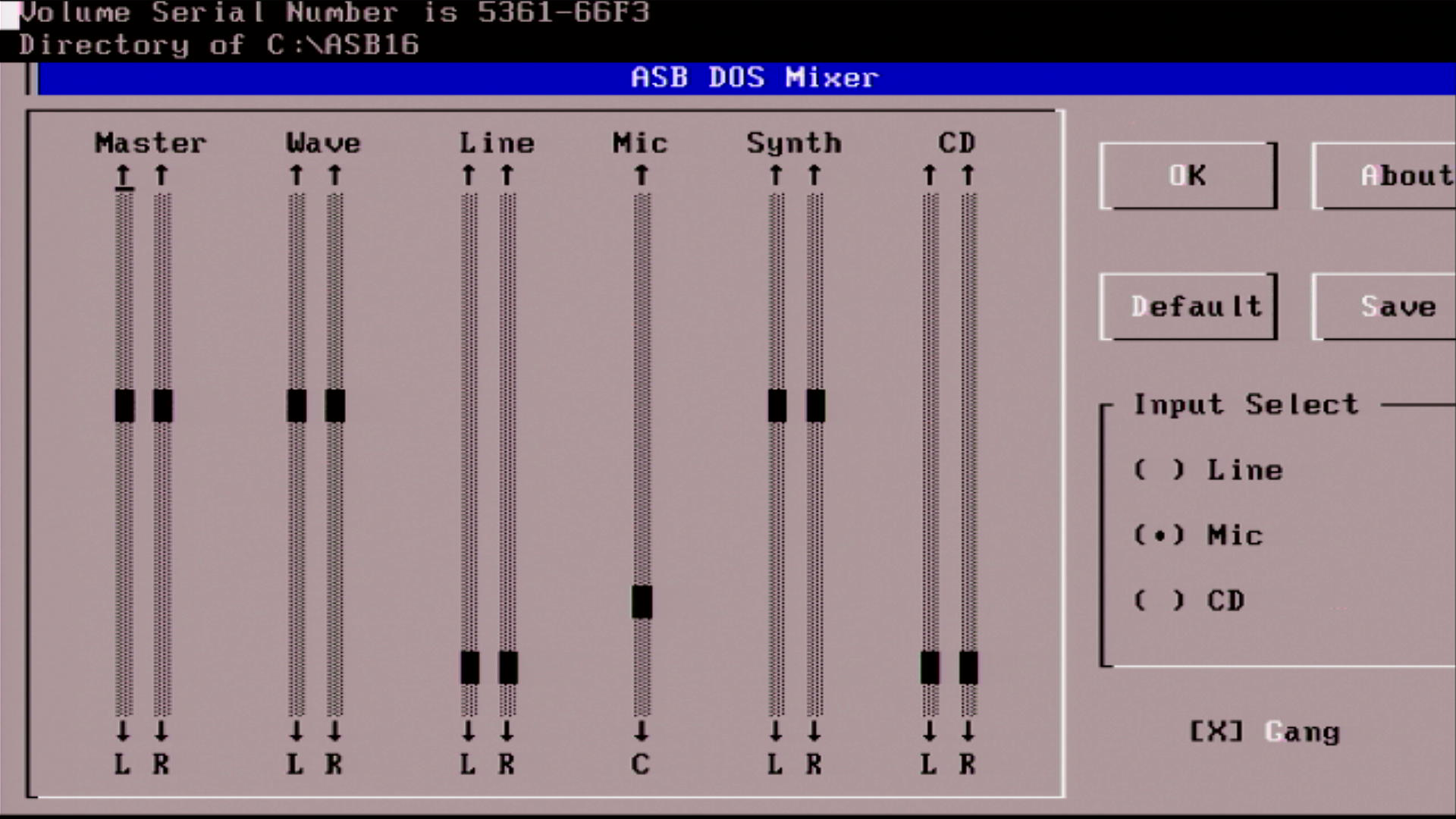




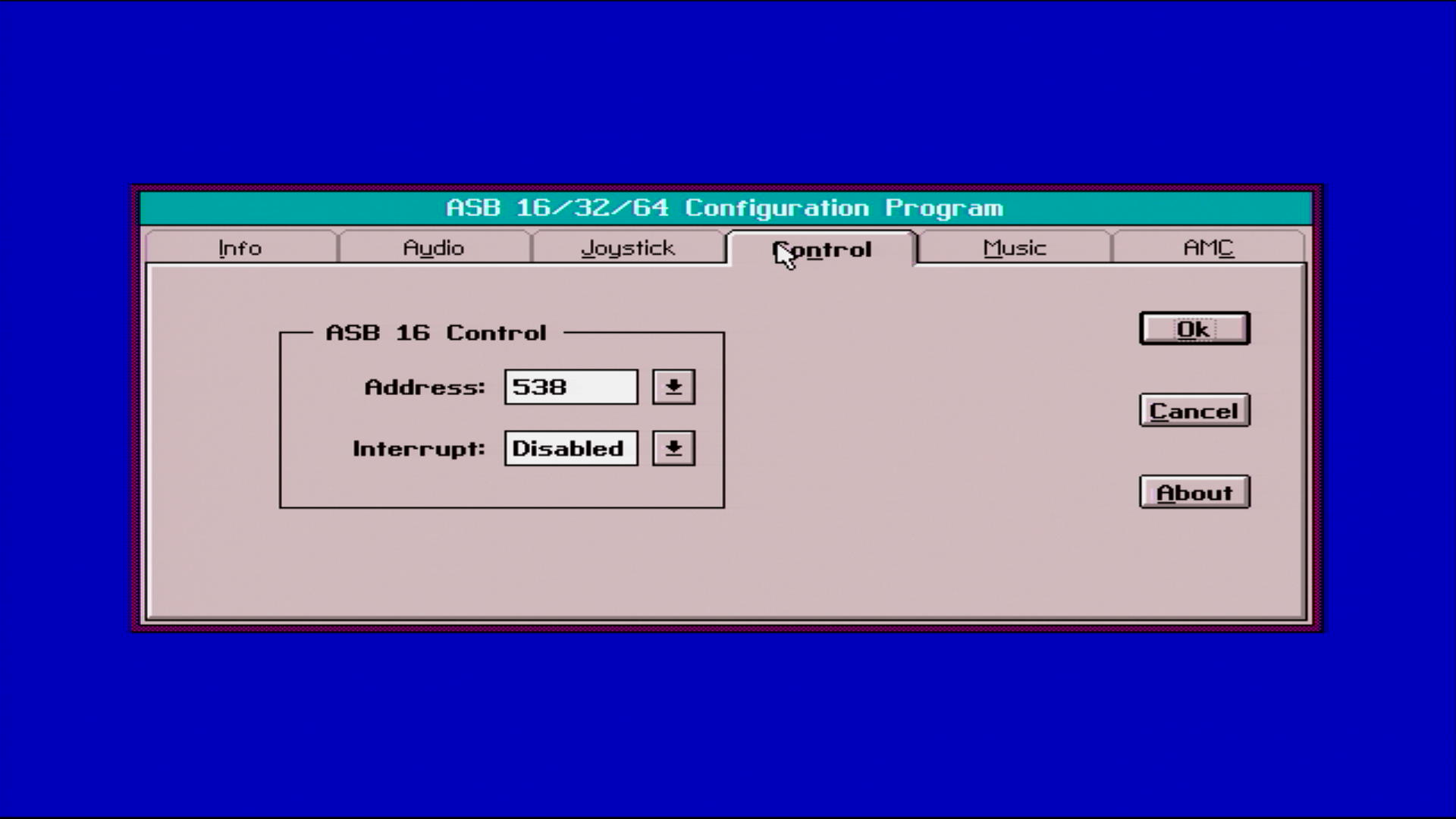

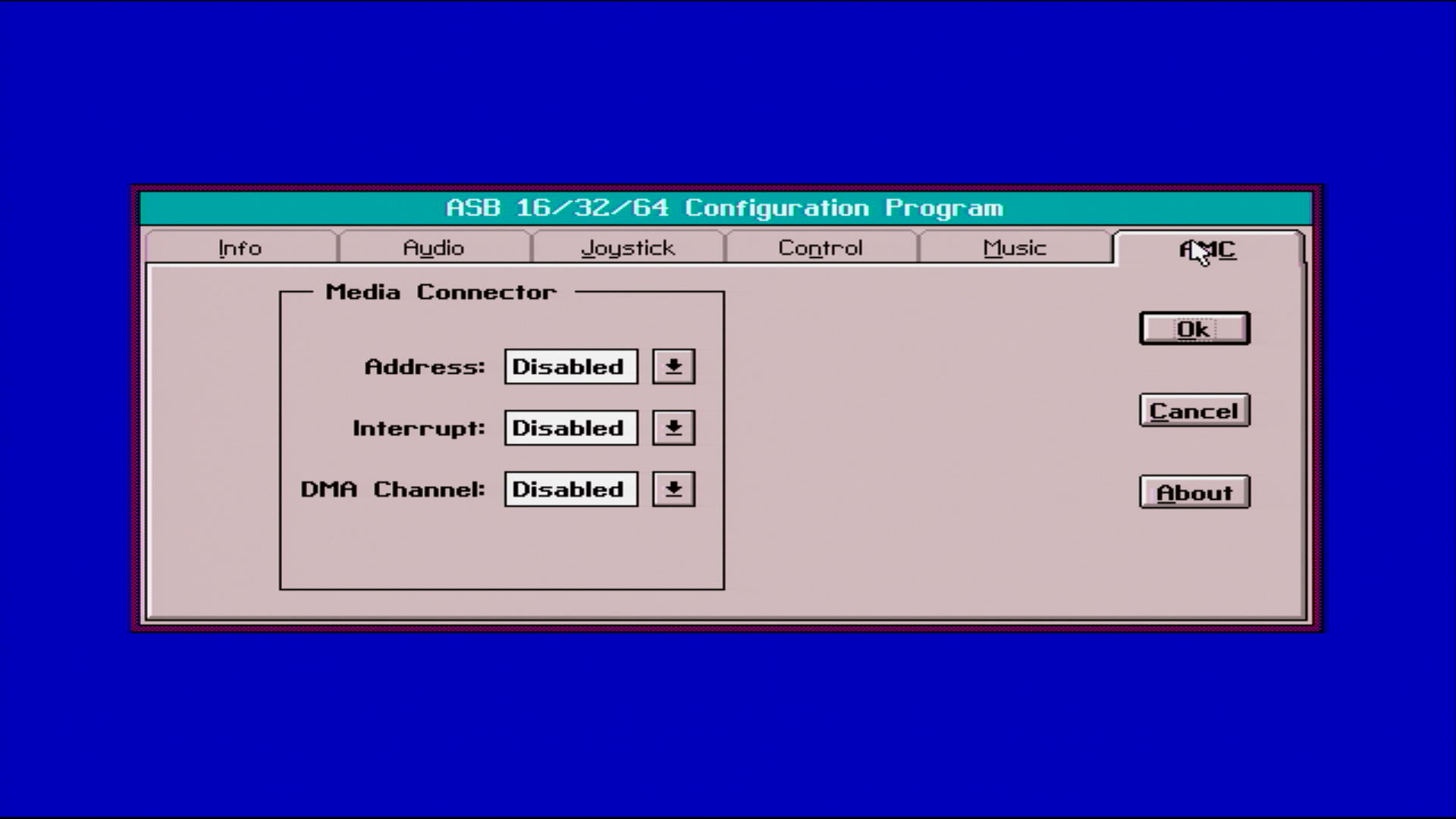

More Images
Drivers
The MSC 16 and MSC 32 cards use the same driver software as the ASB 32/64. In DOS, this gives you three tools - a diagnostic utility, a mixer and a cd player.
Ad Lib ASB 16/32/64 







Introduced: 1997
Codec: Crystal CS4232
Synth Chip: Crystal CS9233 with effects chip Crystal CS8905 (aka Dream SAM8905)
Sample ROM Size: 4 MB
(Roland SC licensed to Dream)
Price When New: 240 DM
Like the MSC16 and MSC32 cards, the ASB32 and ASB64 were also produced after Ad Lib had been renamed to Ad Lib Multimedia by their new owners. These cards were produced in Germany instead of Quebec like the original Ad Lib cards had been.
There were several sub-models of these, including:
- ASB 16 IDE
- ASB 16 Special Edition
- ASB 16 4D IDE
- ASB 32 Wave IDE
- ASB 32 Wave 4D IDE
- ASB 64 Wave Pro 4D IDE
The ASB32 and ASB64 were high-end sound cards with an excellent onboard wavetable synthesizer, effects processor (Panasonic 7395S) and 3D via what they call "4D spatializer". This can be connected to up to 4 speakers for true surround sound, or it be put into a virtual mode with only 2 speakers connected.
The ASB cards had a number of additional connectors: an IDE connector, an "Ad Lib Media Connector", and a 30-pin CyberRAM connector (can connect to CyberComm, CyberISDN, CyberRAM16 and CyberRAM32).
Drivers
Drivers and Tools
Here are a few drivers and tools for the Ad Lib cards:
Original disk - v1.63
AdLib Sound Driver - The Ad Lib Sound Driver is a special sound engine written by Ad Lib to feed sound to their AdLib sound cards. The DOS program was run before the start of a game and ran hidden in the background. When a game developer wanted to play music or sound effects, they would issue a call to the program with the specified ROL music file and its necessary INS or BNK instruments. Songs could be started and stopped, and there were probably other features like fade-in and fade-out. Dozens of games, especially those that use ROL format music, utilized AdLib's sound driver.
The driver is called SOUND.COM and runs as a TSR (terminate and stay resident) program that can be called by the main program to play ROL files in the background. The program accepts at least one argument, which appears to be a memory address.
3rd party driver + software v0.9. Found on the cd.textfiles website. Using this 3rd party driver + music player, I could listen to .ROL music. Perhaps that's why the Microsoft [Windows 3.11] Media Player didn't work - it won't accept these .ROL files.
3rd party driver + software v1.0 - Even though this is a later version, it apparently causes a Stack Fault error when attempts are made to run its test diagnostic function.
